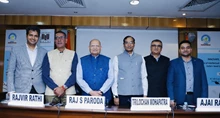
"Right now, we have a currency crisis, a debt crisis, and a food crisis," said Sara Menker, CEO of Gro Intelligence, a data and analytics firm focused on food security and climate change, during the FII Priorities conference on Thursday.
Simultaneously, "many countries have issued an unprecedented amount of foreign currency-denominated debt that they must pay in US dollars, which are the same currencies they must use to import their devalued food," she said. Climate, conflict, and economic insecurity were the three key drivers of global food insecurity and chronic malnutrition, according to Ertharin Cousin, CEO and managing director of Food Systems for the Future, a nutrition impact investment fund.
Although there was a sufficient humanitarian response to the food security challenge, Cousin stated that there was a "lack of investment" in agricultural adaptation required to support a sustainable transformation of the food system, which in turn could support the environment and human health while also generating the economic return required for everyone in the food sector. It was the opposite case for Gabrielle Rubenstein, co-founder and managing partner of Manna Tree, a worldwide food supply chain private equity firm.
"I'm here to inform you that we've just disclosed that we've raised 640 million in four and a half years - that makes us the world's greatest growth equity player," she said. "When you look at what the food supply chain and food security mean, it doesn't mean more FDI. What it means is that profitable business models that are normal private equity firms with revenue and, more critically, top line growth are rising," she explained. But, there are regions where capital has not flowed because investors deemed them too risky, according to Cousin.
"The difficulty is that the risk lens we utilize has confined capital flow to specific areas and entrepreneurs, notably in the asset classes of food and agricultural." Africa, for example, was deemed risky by investors who preferred to see it as a single continent rather than 54 countries, each with a separate risk ratio, according to Cousin.
Global food security is being harmed by more than just the flow of wealth. Menker believes that the inherent cost of capital is currently overpriced and has to be reduced. "As soon as we accomplish that, we will be able to unleash a flood of innovation, different types of return profiles, and opportunities." She claimed that current food systems were not receiving enough funding to undergo the transformation required to feed the anticipated population by 2050, especially when combined with climate impact.
Cousin estimates that agricultural production would need to increase by almost 60% to feed the estimated 2050 population. Menker added that it was also critical to distinguish between food items and nutritional food. "Sure, we produce enough goods, but not enough nutritional food. We don't have the appropriate subsidies that encourage the regenerative production of nutritious food," Cousin concluded. "That is the potential we have if we truly want to not just feed but also nourish the earth."











